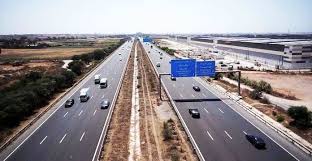The construction of the largest and longest road viaduct in Morocco was launched on Sunday by the Moroccan Minister of Equipement and Water, Nizar Baraka. This monumental project will cross Oued Sakia El Hamra near the Laayoune bypass with a total investment of MAD 1. 38 billion, and that is equivalent to about $139 million. This bridge is part of the Tiznit-Dakhla expressway project with a total length of 1,648 meters and a width of 21 meters. 4 meters in width and its construction is expected to take 40 months.
Scope
The launching of this viaduct is a testament to Morocco’s commitment towards enhancing the structure and possibility of Laayoune. It is anticipated that the viaduct will solve such problems as traffic disruption due to flooding, road safety, and environmental issues in the area. Baraka also underscored the importance of the project in its statement to the press describing it as the biggest of its kind in Morocco. Moroccan local and national firms have been awarded contracts for constructing different parts of Tiznit-Dakhla expressway including the viaduct.

The Tiznit-Dakhla expressway, of which this viaduct is a part, is almost complete and has a completion percentage of more than 97%. The project covers 980 kilometers of expressway and the 15 key structures listed above are already operational. For instance, the Tiznit-Guelmim section, spanning 114 kilometers and requiring an investment of MAD 2 billion ($200 million), is 87% finished. In addition, the Guelmim-Laayoune segment of 441 km, at the cost of MAD 6 billion ($600 million) has been constructed and recently operational. Moreover, the Laayoune-Dakhla section that is 500 kilometer and total investment of MAD 1 billion ($100 million) has been completed and implemented.
The construction of the viaduct started on the 25 th anniversary of the Throne Day which made the event more formal. In the inauguration speech, specific information about the progress of the Tiznit-Dakhla expressway project was outlined, demonstrating the Moroccan government’s concern with infrastructural development and growth of the region.
Objectives
Mr. Baraka, in his statements, touched on the broad objectives of the project. The viaduct, therefore, is poised to effectively help manage flow of traffic across the Laayoune region in cases where normal road construction is rendered impassable by floods that are usually encountered during certain weather conditions. Considering road safety measures and the impact on the environment, the project comes with the general strategy of infrastructural development in Morocco as well as the environmentally sensitive measures. However, it is also fair to note that the development of the viaduct through Moroccan companies evidences the country’s enhancing ability to undertake large structure works. It also contributes to the economy of the nation besides enhancing the local experience and employment opportunities available within the country.
Altogether it can be stated that the construction of such a long and complex road viaduct in Morocco represents a great achievement in the development of its infrastructure. This extensible viaduct is going to play an important role in the expressway project of Tiznit-Dakhla that holds a greater importance in the long-term plans for development of Morocco as a safe, sound and sustainable nation for modern world needs.
Read also Morocco Tiznit-Dakhla highway project updates
Read also Morocco’s 1,300 Kilometer High Speed Rail to be Constructed by 2040

